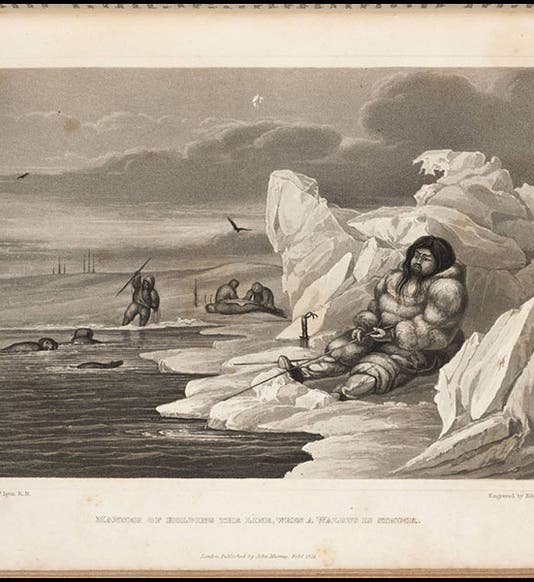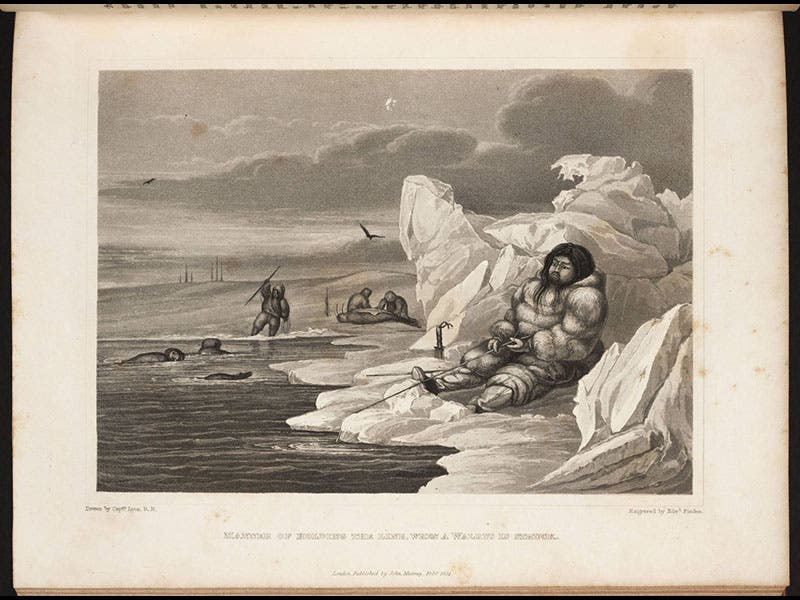Scientist of the Day - William Edward Parry
William Edward Parry, a British naval officer, was born Dec. 19, 1790. Parry was one of the most successful of the seekers for a Northwest Passage in the decades between 1818 and 1859. Granted, he never made it through--no one did until 1905--but he made it halfway across on his first try in 1819, and his other three efforts, between 1821 and 1827, each saw significant achievements, even if they fell short of finding the Passage.
The second voyage of 1821-23 is a good example. Parry and his two ships, Hecla and Fury, were frozen in north of Hudson Bay for two years and never made it any further west. But rather than twiddling their collective thumbs in enforced idleness, Parry and his men befriended the local Inuit, whom they called Esquimaux, and made a study of their way of life, and couldn't help noticing how well the Inuit survived in an environment that the British found supremely inhospitable. Parry's Narrative (1824) is enlivened not only with his observations of the natives, but with abundant illustrations showing how the Inuit fished, hunted, and played, as the images above demonstrate.
In our 2008 exhibition, Ice: A Victorian Romance, we displayed all four of Parry’s narratives, where you can see images from his other expeditions, voyage 1 (1819-20), voyage 3 (1824-25), and voyage 4 (1827). There is a portrait of the dashing young Parry, made about the time of his first voyage, in the National Portrait Gallery in London (last image above):
Dr. William B. Ashworth, Jr., Consultant for the History of Science, Linda Hall Library and Associate Professor, Department of History, University of Missouri-Kansas City











